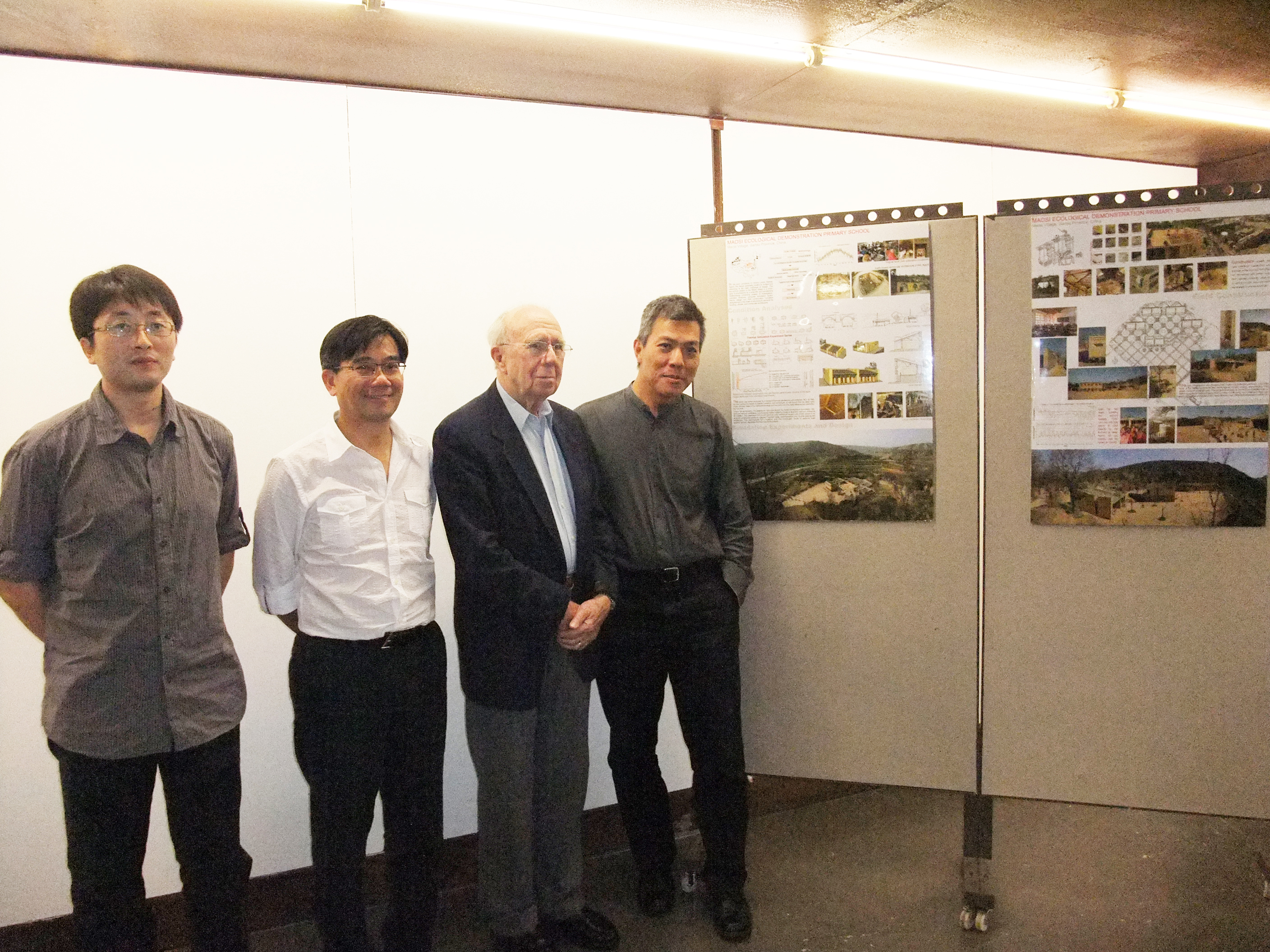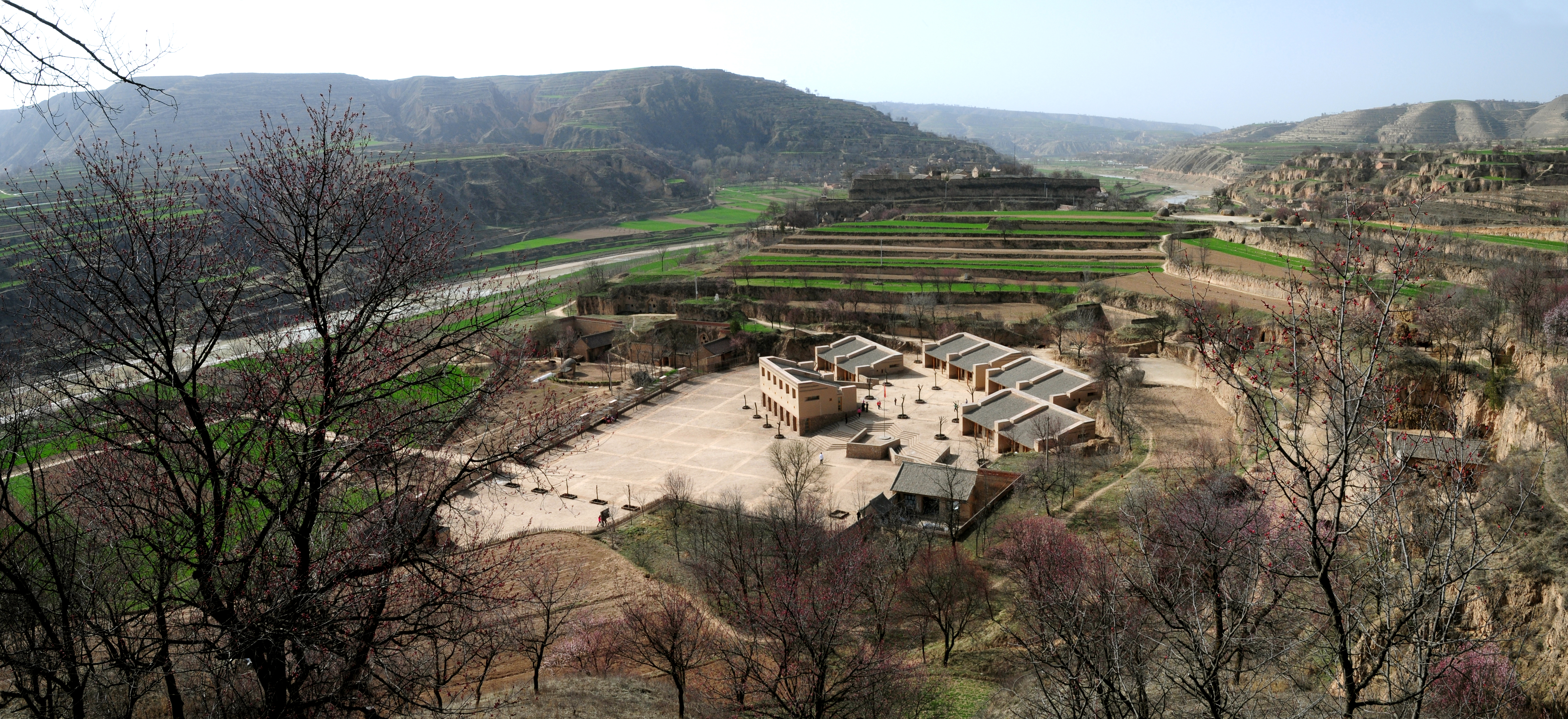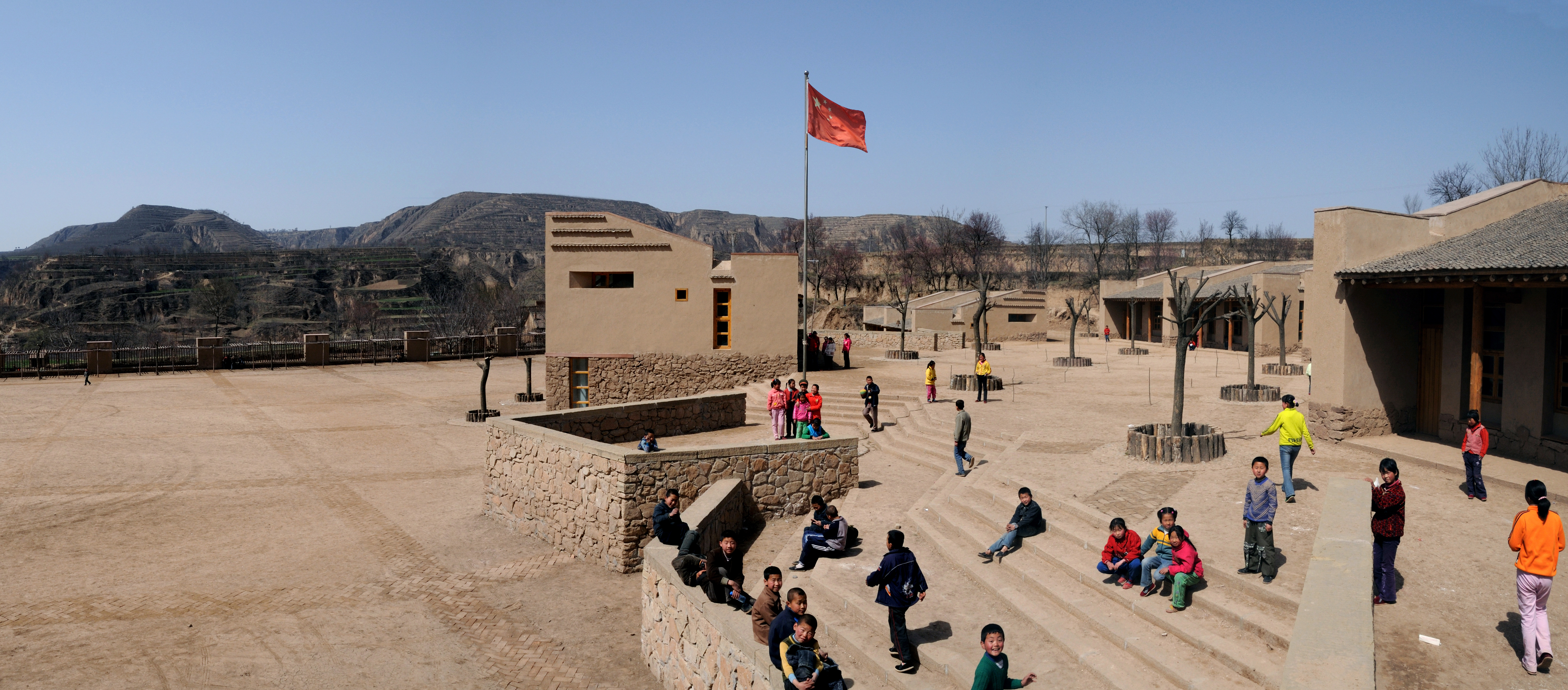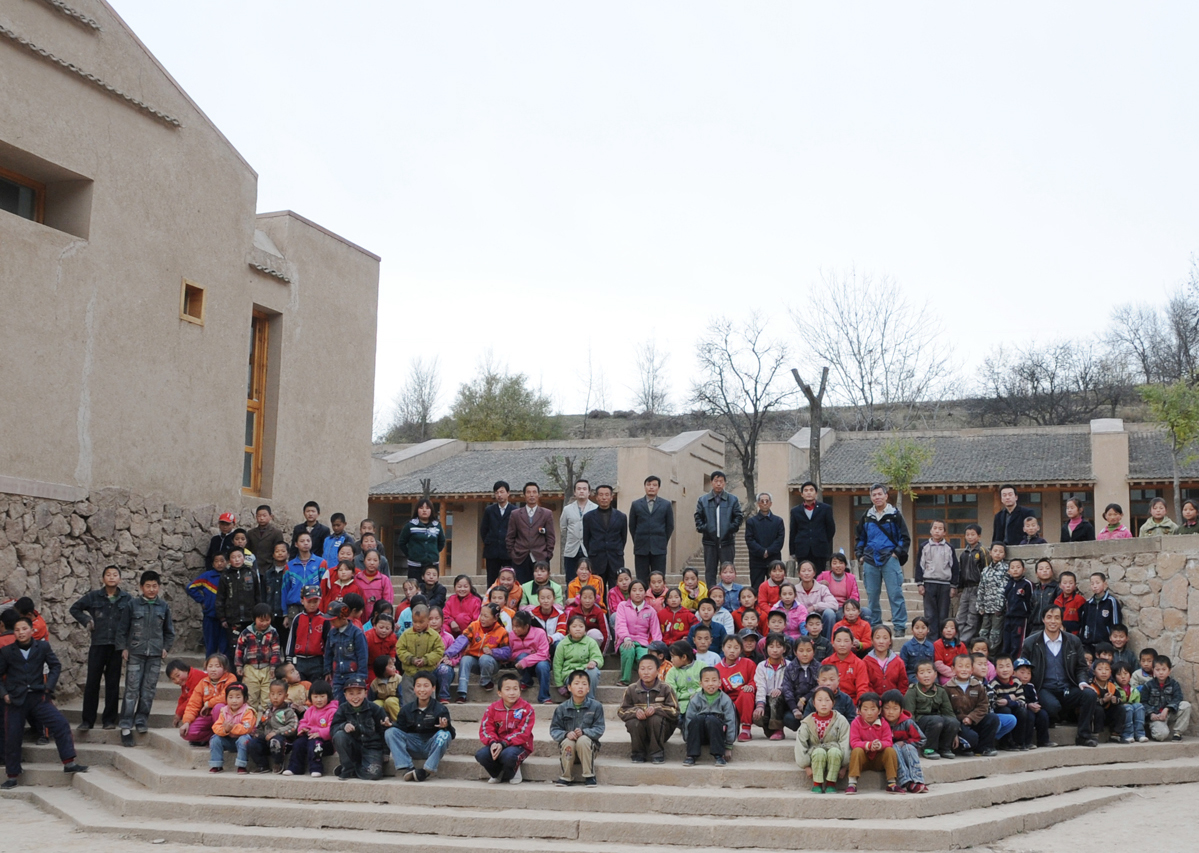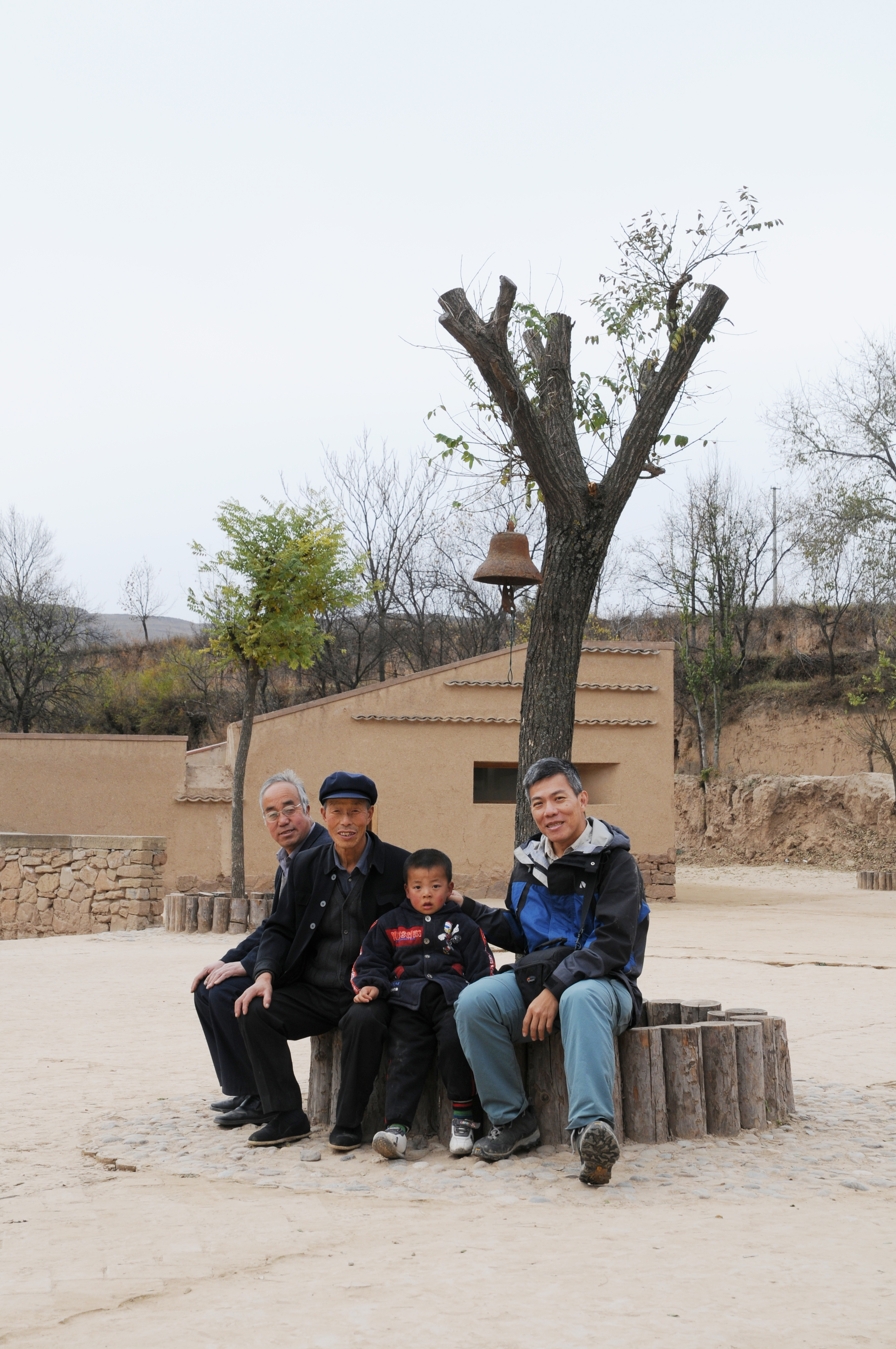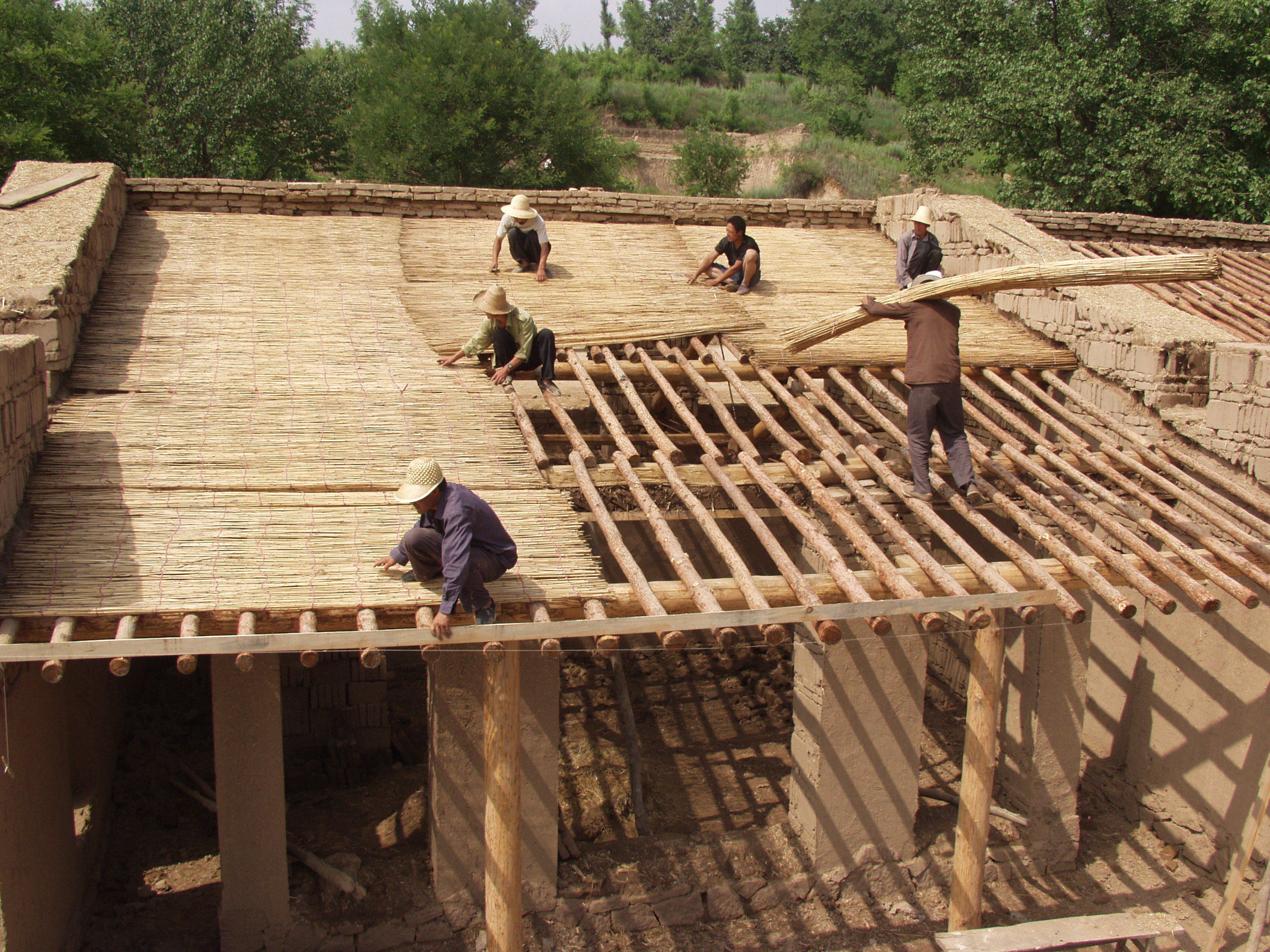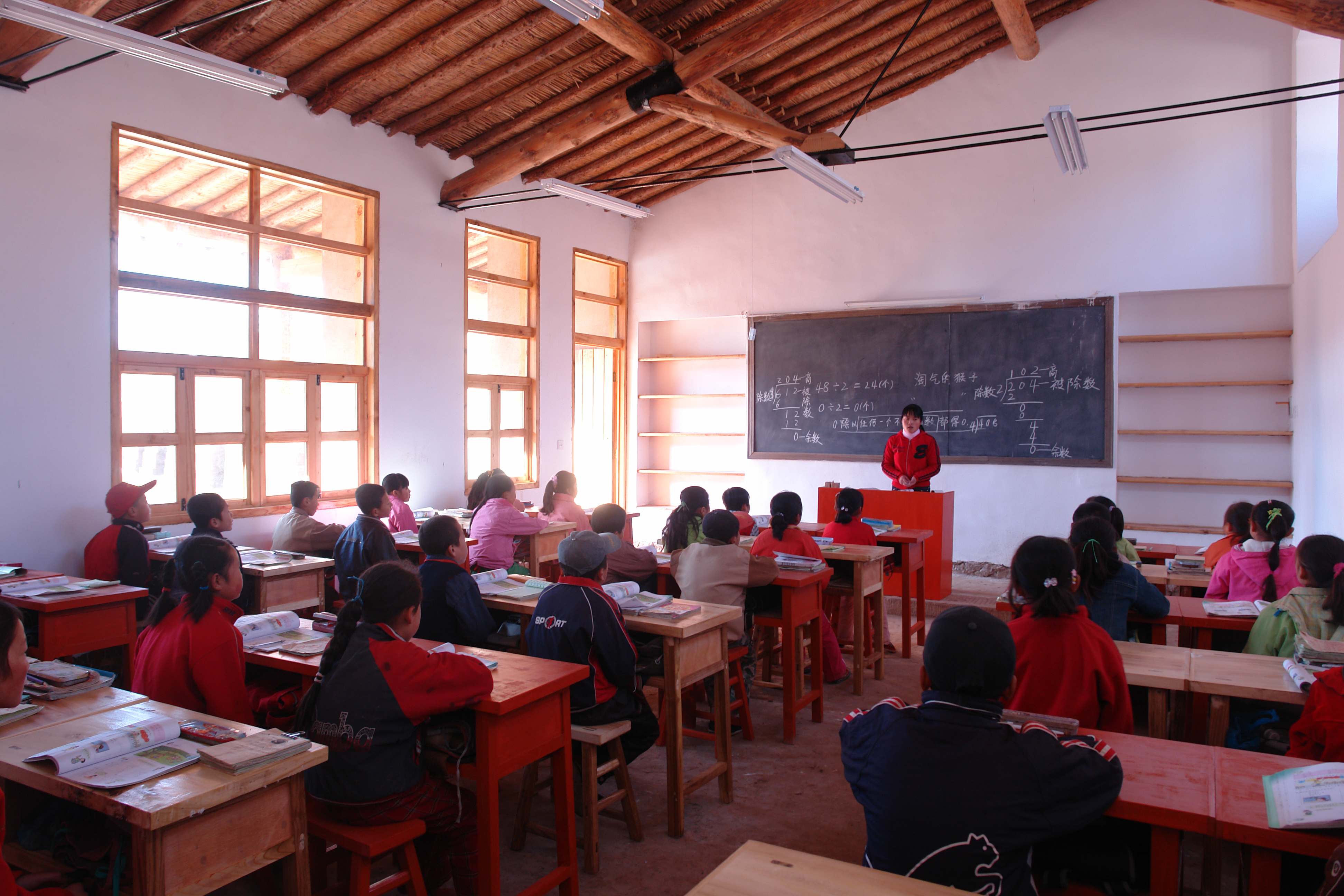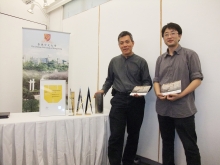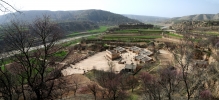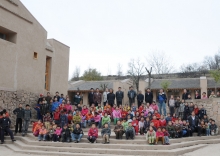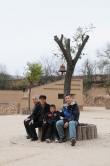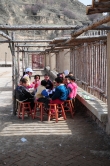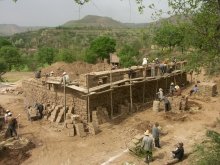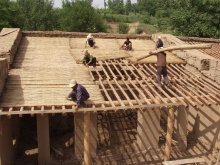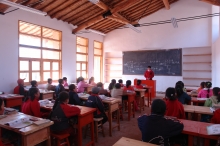CUHK
News Centre
CUHK Ecological School Project Wins RIBA International Award andRecognised as the Design Reference for Gansu Schools
The Maosi Ecological Demonstration Primary School designed by a team led by Prof. Edward Ng of the Department of Architecture at The Chinese University of Hong Kong (CUHK) was awarded yet another international architectural award, the 2009 RIBA International Award. Adopting the innovative principle of ‘high science and low technology’, the project has successfully demonstrated a feasible way to build a school that can address the environmental and socio-economical dimensions of sustainability. Other projects receiving this honour include three world-class architectures in Beijing, namely the National Stadium (the Bird’s Nest), the National Aquatics Center (the Water Cube) and the Beijing Capital International Airport Terminal 3.
Prof. Ng is the only Chinese recipient of the RIBA International Award so far. Back in 2006, he was honoured with the same award from RIBA for his bridge-building project, ‘A Bridge Too Far, A Dream Come True’ (Bridge To China). He is committed to answering the demands of the poor villages in China with his modestly-designed and low-cost sustainable architectures. Bridge To China and the Maosi School are two of the most representative projects of Prof. Ng, which are also the least expensive projects recorded in the history of RIBA Awards since 1966.
The Maosi School is located in the remote village of Maosi in the Loess Plateau region, Gansu Province, which is characterized by fragile ecological and extreme climatic conditions, a lack of resources, and low levels of economy, education and technology. With about 200 students, the existing schools in the village are either housed in caves or in simple single-storey brick huts. With funding from Hong Kong donors, Prof. Ng led a team to carry out the eco-school project in Maosi village in 2002, with the aim of creating a comfortable and desirable campus for children.
The eco-school is a living example of the ‘high science and low technology’ design concept, incorporating design and research based on the advanced computational simulation studies of Mr. Mu Jun, a PhD student of Prof. Ng. The school is designed to maximize daylight and natural ventilation. It is found that the most basic technique of thermal mass and insulation based on earth and other natural materials is the most effective approach to ecological architecture. Most of the building materials such as mud bricks, rubble, straw and reed, are natural products and were sourced locally with minimum embodied energy. Construction was carried out by the villagers with simple tools, hence the costs of materials, manpower and equipment were much cheaper than those of other local buildings constructed using conventional methods. Yet the school building performs far better in terms of thermal comfort, energy consumption and environmental impact. Prof. Ng said, ‘I am delighted to see how my team has successfully charted an advance of architecture through research. As a professor at CUHK, I will fuse the new knowledge into my teaching in order to benefit our students with the latest architectural knowledge.’
Impressed and very pleased with the project, the school’s headmaster said, ‘Our winter is extremely cold. But in this new school, not a single piece of coal was burnt to keep warm. We can save the money for books.’ Students are jubilant with their new school, and found it ‘beautiful and neat, as well as a good place for learning.’
he project has also been well-received by the mainland authority. Prof. Ng joyously remarked, ‘The Maosi School has recently been adopted by the Ministry of Housing and Urban-Rural Development to serve as a design reference for over 200,000 schools in Gansu. With its successful completion, I hope to drum up public support to help introduce ecological buildings in more villages on the mainland, with an aim to enhancing sustainable development in China.’
Prof. Ng is actively involved in the reconstruction works for Sichuan after the earthquake. About 90 per cent of the houses in Ma’an Qiao village in Liangshan Yi Autonomous Prefecture were damaged by the earthquake. With the help of the Bridge to China Charitable Foundation, 35 houses have been built using earth and other natural materials. They were proved to be as quake-resistant as concrete houses but cost two-thirds less.
A project excelling in outstanding contemporary architectures, the Maosi School has received a number of international honours, including Commendation in the learning category of the World Architecture Festival, three awards from the Design for Asia Award (DFA Award) presented in Hong Kong—the DFA Grand Award, the DFA Special Award for Sustainability and the DFA Gold Award. In the first China Architecture Media Award presented in December last year, the project was also awarded with the top prize, the Best Architecture Award.
The RIBA International Award rewards excellent architectural designs from around the world. This year, a total of 40 quality works were shortlisted, among which only 15 received the honour. The award presentation ceremony will take place on 14 July in London.

From left: Mr. Mu Jun, Ph.D student, Department of Architecture, CUHK; Prof. Ho Puay Peng, Chairman, Department of Architecture, CUHK; Sir David Akers-Jones, Honorary Chairman, Wu Zhi Qiao (Bridge to China) Charitable Foundation; and Prof. Ng Yan-yung Edward, Professor, Department of Architecture, CUHK
